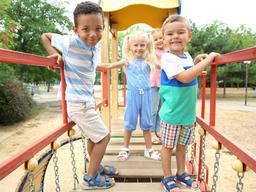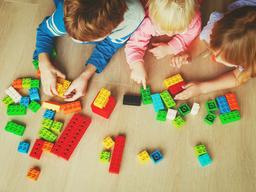The Connection Between Physical Activity and Mental Well-being

We often think of exercise as something we do to build strength or stay healthy—but it’s also one of the most powerful tools we have to support mental and emotional well-being. And for kids with special needs or therapy goals, movement can be especially important.
Let’s explore how physical activity helps regulate emotions, reduce anxiety, and improve focus—and how you can use simple movement-based activities to support your child’s mind and body.
How Physical Activity Supports Mental Health in Kids
When children move their bodies, it’s not just their muscles that benefit. Physical activity:
- Releases “feel-good” brain chemicals like endorphins and serotonin
- Reduces stress and anxiety by calming the nervous system
- Improves focus, attention, and mood regulation
- Builds confidence and body awareness
- Offers a positive outlet for pent-up energy or frustration
For kids with sensory sensitivities, speech delays, or developmental challenges, movement can also help regulate their systems—making therapy and learning more effective.
Physical Activity and the Sensory System
Children with sensory processing challenges often seek or avoid certain types of input. Movement provides valuable proprioceptive (body awareness) and vestibular (balance) input, which can help calm, focus, or energize a child’s body and brain.
Activities that help include:
- Jumping on a trampoline or bed
- Swinging at the park
- Rolling like a log or doing animal walks
- Climbing, crawling, or using a scooter board
- Dancing or spinning in circles
These types of “heavy work” or full-body movements can help a child feel more organized and emotionally balanced—especially when built into their daily routine.
Movement Helps Kids Manage Big Feelings
When your child is feeling overwhelmed, anxious, or upset, physical activity can be a powerful coping strategy. It gives them a safe and healthy way to release energy and reset emotionally.
Here are some movement-based ways to support emotional regulation:
- Stretching together – Helps calm the body and focus the mind
- Nature walks – Reduces stress and boosts mood
- Throwing or kicking a ball – Offers sensory input and emotional release
- Yoga or deep breathing with movement – Combines mindfulness with physical control
Parent tip: You don’t need fancy equipment! Even a hallway obstacle course made from pillows and chairs can do the trick.
Physical Activity and Focus
Movement isn’t just for recess. In fact, studies show that kids who move more often are better able to:
- Concentrate on tasks
- Transition between activities
- Regulate their energy and emotions
- Engage more successfully in therapy and learning
This is especially true for kids with ADHD, sensory needs, or motor planning challenges. That’s why many occupational therapists use movement as a core part of their sessions.
Easy Ways to Add Movement into Your Child’s Day
You don’t need a structured exercise routine to reap the benefits. Try weaving movement into everyday moments:
- Morning movement: Start the day with stretching, jumping jacks, or a short dance party
- Movement breaks: Let your child move between learning or therapy activities
- After-school energy release: Go for a walk, jump rope, or do a scavenger hunt
- Wind-down routine: Include calming yoga or stretching before bedtime
Let your child lead the way—when movement is fun, they’re more likely to engage and benefit.
When Movement Supports Therapy Goals
At TeleSesh, many of our occupational and speech therapists incorporate movement into teletherapy sessions. Why? Because for kids, movement helps activate the brain, making it easier to learn, express themselves, and stay regulated.
We might guide kids through:
- Gross motor warm-ups
- Movement-based games to build communication skills
- Body awareness exercises to support speech production
Whether online or in person, movement matters!
Bringing It All Together
Supporting your child’s mental well-being doesn’t always require big changes. Sometimes, it’s as simple as adding a few minutes of joyful movement into your day.
Whether your child loves to climb, stretch, spin, or dance—physical activity helps them feel better, focus better, and connect better.
And the best part? You can do it together.
Write a Review
Your overall rating
Recent Blogs

Outdoor Activities that Promote Physical and Sensory Development
May 13, 2025
Overcoming Obstacles in Speech Therapy with Teletherapy
March 25, 2025
5 Tips for Enhancing Your Child’s Social Skills with Speech Therapy
March 18, 2025
Nurturing Fine Motor Skills: A Comprehensive Guide for Parents
March 11, 2025

